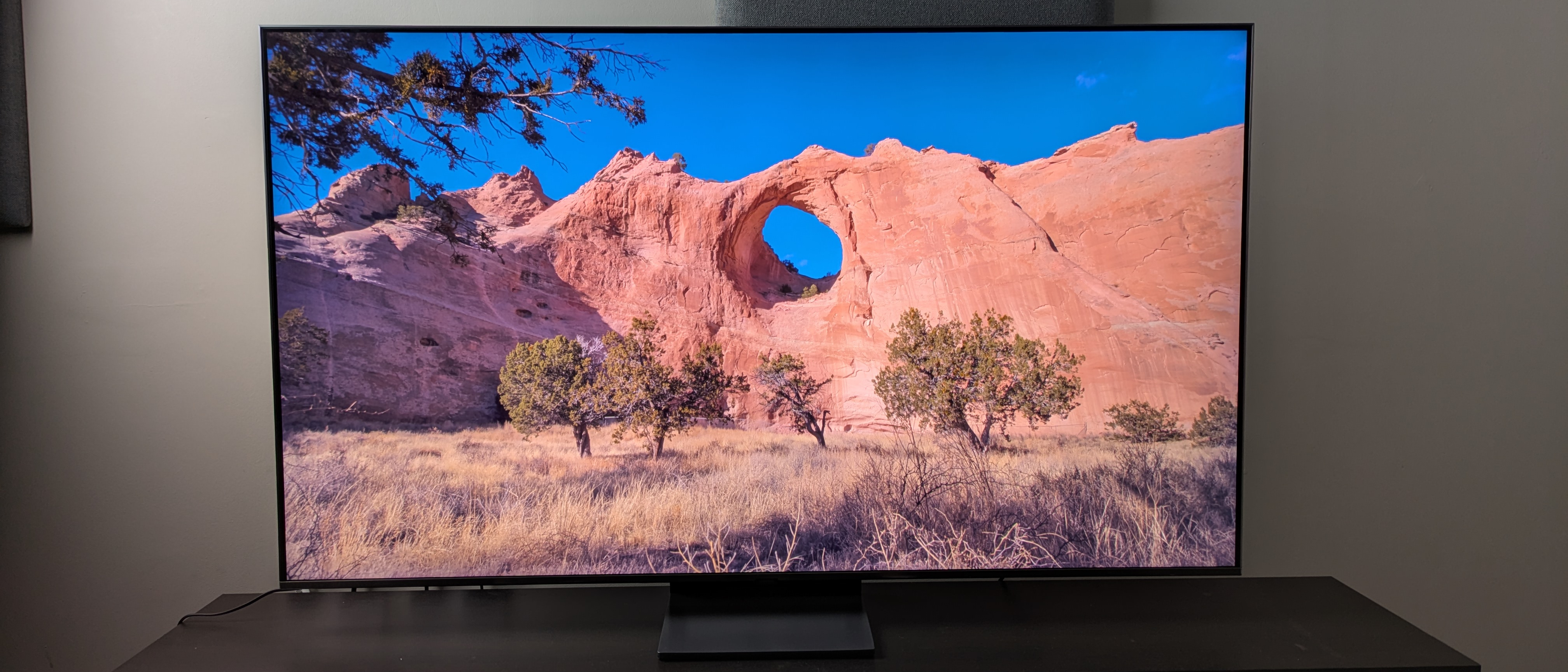TechRadar Verdict
The Samsung QN80F is a great mid-range TV for gaming, thanks to its strong suite of gaming-related features and responsive performance. It also delivers solid picture quality, as well as an improved smart TV platform from its predecessor. However, its inconsistent picture quality, average sound quality and slightly high price make cheaper rivals from Hisense and TCL more tempting.
Pros
- +
Punchy colors
- +
Great gaming features and performance
- +
Improved smart TV platform
Cons
- -
Reflective screen
- -
Pricey compared to rivals
- -
No Dolby Vision HDR
Why you can trust TechRadar
Samsung QN80F: Two-minute review
The Samsung QN80F is the mid-range model in the company’s 2025 4K Neo QLED mini-LED TV lineup. It is available in 50-100-inch sizes (with the 50-inch only available in the UK and the 100-inch only available in the US and Australia) and carries a stacked feature set.
The QN80F uses the same NQ4 AI Gen2 processor as its predecessor, the Samsung QN85D. While not as effective as the step-up Gen3 processor, it still delivers useful picture and audio enhancements.
Picture quality is mixed on the QN80F. Its vibrant yet natural colors are up there with the best TVs, and it also delivers refined details and solid contrast. While brightness is lacking compared to cheaper rivals such as the TCL QM7K (and even the TCL C7K in the UK), it can still give pictures a nice boost. Black levels, while raised at times, are also generally respectable. Where the QN80F struggles is with its highly reflective screen and inconsistent motion handling, particularly with sports – something its more premium counterpart, the Samsung QN90F, has no issue with.
Sound quality is average on the QN80F. Speech is clear and sound placement is accurate, with a good sense of direction, but bass is lacking, and the narrow soundstage never extends beyond the screen’s threshold. Movie fans will definitely want to invest in one of the best soundbars for this TV.
Gaming is a strong area for the QN80F, which has a near-full list of gaming features, including 4K 144Hz, FreeSync Premium Pro and ALLM across four HDMI 2.1 ports. Plus, Samsung's Gaming Hub is an excellent portal for cloud-based gaming apps. Pair all this with an ultra-low 9.9ms input lag time, and the QN80F competes with the best gaming TVs.
Samsung’s own Tizen 9.0 smart TV platform serves as the QN80F’s smart interface. With smooth performance, tons of picture settings, a customizable home page, several ‘hubs’, and a useful quick menu, Tizen 9.0 is the best iteration of Samsung’s smart TV platform to date. Some settings are buried deep in menus, but this is one of my only gripes.
While the QN80F does have a strong feature list and generally solid performance, its value is a tough category to score. At $1,299 / £1,399 for the 55-inch model I tested, there are cheaper mini-LEDs from Hisense and TCL that deliver very similar features and performance for a lower price. The QN80F is still a good option, but one that you should look for during major sales events.
Sign up for breaking news, reviews, opinion, top tech deals, and more.
Samsung QN80F review: Price and release date
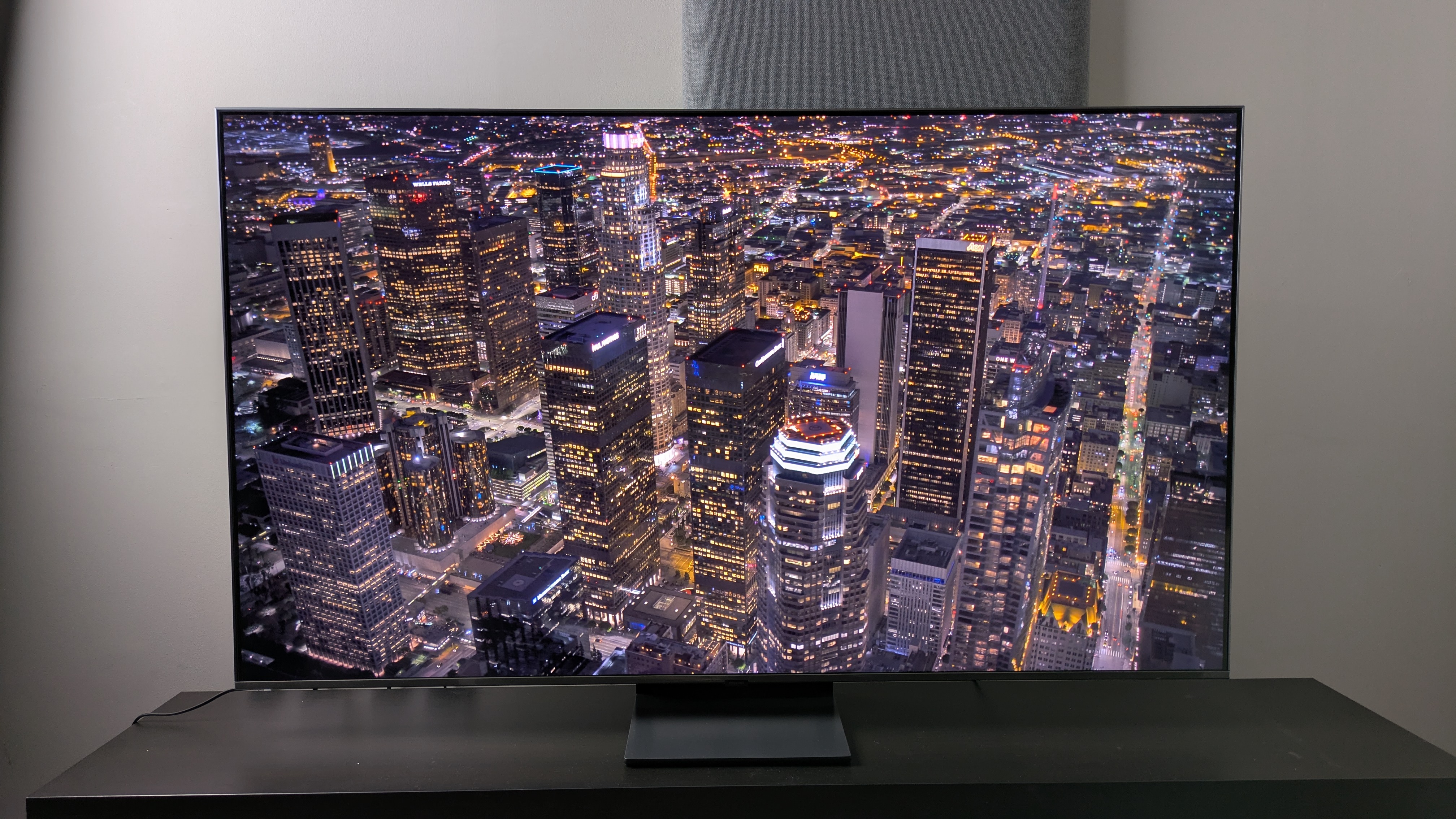
- Release date: May 2025
- 50-inch: $N/A / £1,099
- 55-inch: $1,299.99 / £1,399 (roughly AU$1,991)
- 65-inch: $1,799.99 / £1,699 (roughly AU$2,757)
- 75-inch: $2,299.99 / £2,599 (roughly AU$3,524)
- 85-inch: $3,499.99 / £3,699 (roughly AU$5,363)
- 100-inch: $5,999.99 / £N/A (roughly AU$9,196)
The Samsung QN80F is the mid-range model in Samsung’s 2025 4K Neo QLED (mini-LED) lineup, sitting above the Samsung QN70F and below the Samsung QN85F and the flagship Samsung QN90F. The QN80F is not available in Australia. For the 55-inch model I tested, its May 2025 launch prices were $1,299.99 / £1,399 (roughly AU$1,990).
Since its launch, there have been discounts across the entire lineup. The 55-inch price remains unchanged in the US, but in the UK, its price has dropped to £1,199.
Samsung QN80F review: Specs
Screen type: | QLED with mini-LED |
Refresh rate: | 144Hz |
HDR support: | HDR10+, HDR10, HLG |
Audio support: | Dolby Atmos |
Smart TV: | Tizen |
HDMI ports: | 4 x HDMI 2.1 |
Built-in tuner: | ATSC 3.0 (USA) |
Samsung QN80F review: Benchmark results
Samsung QN80F review: Features
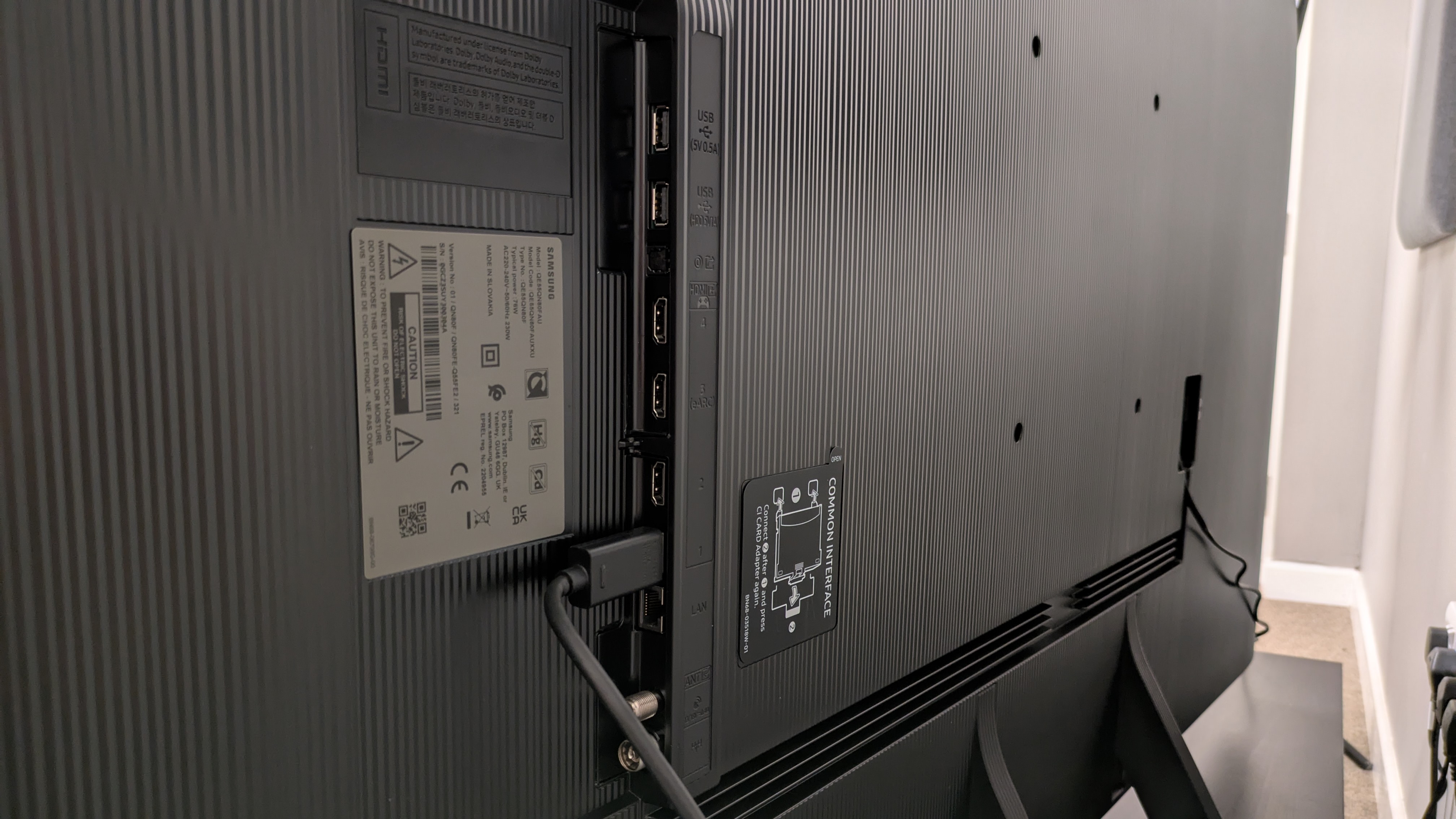
- NQ4 AI Gen 2 Processor
- HDR10+ HDR support
- Four HDMI 2.1 ports with 4K 120Hz for gaming
The Samsung QN80F uses a mini-LED backlight and has a standard gloss screen rather than the Glare Free screen used in the step-up Samsung QN90F mini-LED TV. It features Samsung’s QN4 AI Gen2 Processor, a step-down from the Gen3 processor used in the QN90F, that supports 4K AI upscaling and Real Depth Enhancer.
Like all Samsung TVs, the QN80F supports the HDR10+ High Dynamic Range format, but not Dolby Vision.
The QN80F’s four-channel, 30W sound system supports Dolby Atmos. There are also AI-based tools such as Active Voice Amplifier and Adaptive Sound, both of which analyze the content on screen and adapt the sound accordingly.
Gaming features include 4K 120Hz, VRR (AMD FreeSync Premium Pro included) and ALLM, with all supported on four HDMI 2.1 ports. There is also Samsung’s Gaming Hub, which provides access to cloud-based gaming apps including Xbox and Luna.
The QN80F uses Samsung’s Tizen 9.0 as its smart TV platform. Along with the AI-based picture and sound enhancement tools mentioned above, the TV provides AI content recommendations based on viewing history. It has access to all major streaming apps such as Netflix and Prime Video, and there is built-in voice assistant support from Alexa and Bixby. The QN80F also supports the Samsung Art Store feature previously exclusive to Samsung’s The Frame TVs, which lets you display artworks when the TV is in standby mode.
- Features Score: 5/5
Samsung QN80F review: Picture quality
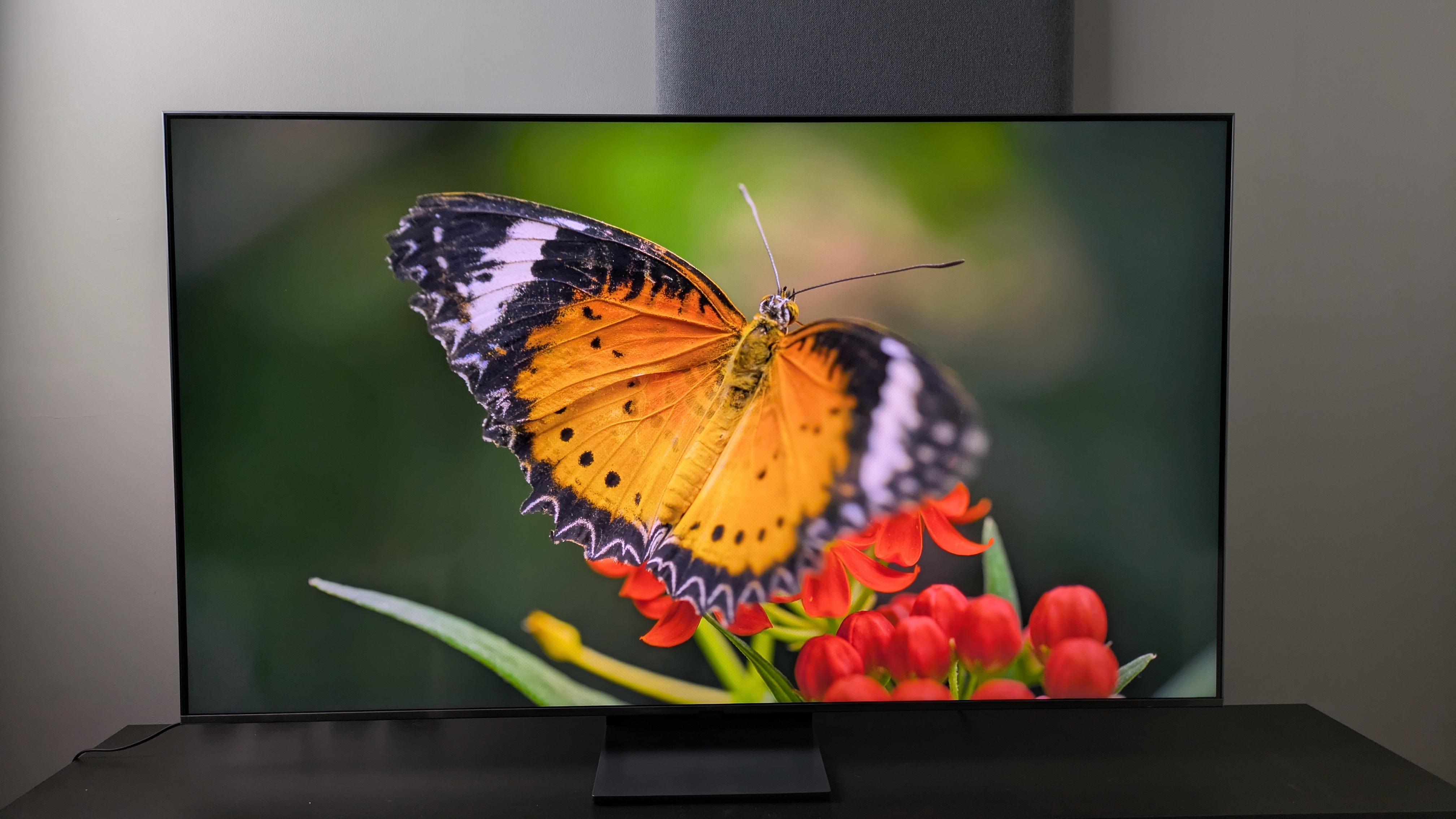
- Bold, vibrant colors
- Generally good contrast
- Screen reflections
I measured the QN80F in its Standard and Movie picture modes. I did find that Filmmaker Mode was the more accurate picture preset overall, but Movie provided a brightness boost (in default settings) that allowed the QN80F to better show off its picture quality strengths.
Peak brightness (measured on a 10% HDR white window pattern) hit 1,106 nits in Movie mode and 975 nits in Standard. That is a big drop from its step-up sibling, the QN90F, which registered 2,086 nits in Movie and 1,987 nits in Standard. It’s even less than the cheaper mid-range TCL QM7K, which hit 1,733 nits in Filmmaker mode (the UK equivalent TCL C7K hit 1,706 nits). This is quite a disappointing result for the QN80F.
Fullscreen HDR brightness, however, was significantly higher, with the QN80F hitting 754 nits in Movie mode and a mammoth 869 nits in Standard, which should make Samsung’s mid-range mini-LED TV great for daytime viewing in brighter rooms.
This does, however, bring me to the elephant in the room: the QN80F’s reflective screen. I found that I could see objects reflected on the TV’s screen when watching dark scenes, even in dim room lighting conditions.
The QN80F does an effective job upscaling non-4K movies and TV shows. An HD stream of Fight Club viewed on Disney Plus benefited from an uplift in sharpness, giving textures a cleaner look, and contrast was also stronger. But upscaling wasn’t as effective with lower-resolution content. The TV’s Auto Remastering HDR setting is an option here, but I found it gave pictures a too-sharp look.
Color reproduction is the QN80F’s main strength. A scene from Elemental (on Disney Plus) where Ember makes a red and orange glass vase showcased the TV’s vibrant, punchy color display. Watching a 4K Blu-ray of Wicked, a scene where Elphaba sings under pink flowers showcased the QN80F’s ability to deliver more natural hues, giving the flowers and Elphaba’s green skin a realistic yet dynamic look.
When I measured the QN80F’s HDR color gamut coverage, it yielded results of 70.3% for BT.2020 and 93.05% for UHDA-P3. These are surprisingly low results for a mini-LED in this range, but also not far off the QN90F’s numbers, which hit 76.3% and 93.6%, respectively, for the same color gamuts.
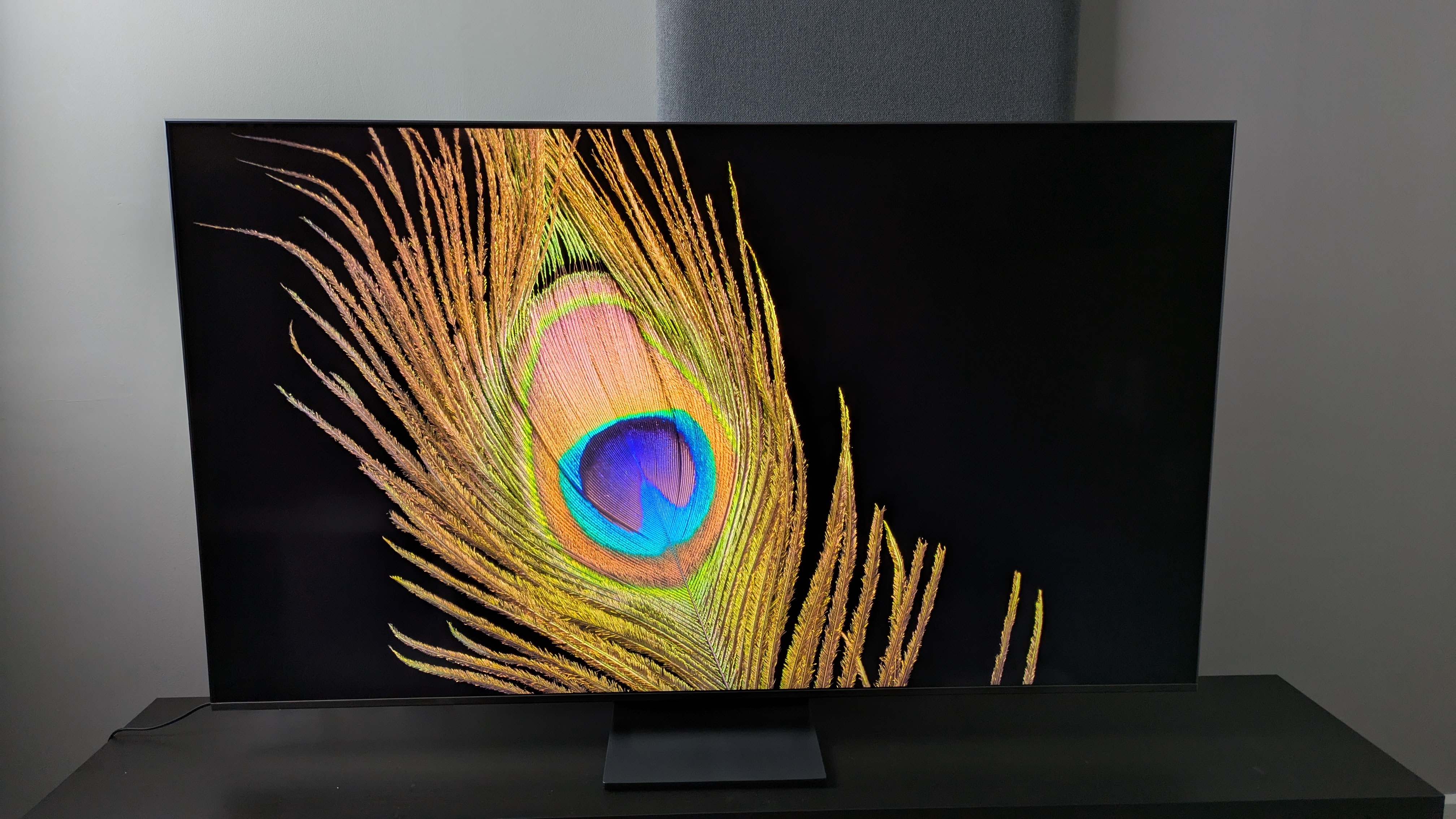
The QN80F’s black levels were generally quite good. As Hutler made his way to Orlock’s castle in Nosferatu, blacks looked pretty deep, although they did take on a slightly raised gray tone at times. Contrast was solid, with light sources such as torch and lamplight contrasting well with the dark surroundings in both Nosferatu and The Batman. The QN80F also showcased good local dimming with very few instances of backlight blooming.
Viewed from an angle, the QN80F’s screen took on a gray wash in darker areas, but its contrast wasn’t as bad as what I’ve seen on some older or cheaper mini-LED TVs.
Watching the black and white scenes in Oppenheimer, the QN80F had a good range of gray tones, and while screen uniformity wasn’t as good as what you’d find on more premium mini-LED and OLED TVs, it was still solid.
Textures and details throughout my viewing were rich and lifelike, with the right level of sharpness. Faces looked detailed, and the QN80F’s solid contrast helped to give objects and textures definition and depth.
Motion handling was an area the QN80F struggled with. Setting motion and judder reduction to between 3 and 5 seemed to be the sweet spot for movies, depending on how ‘smooth’ a picture you’re looking for. With these settings active, a scene in No Time To Die where a camera pans across a cliff face was smooth without any of the dreaded soap opera effects.
Using the same settings, sports never looked quite right, however. There always seemed to be motion artifacts, regardless of the settings I used. While football games on both YouTube and Prime Video were watchable, the action wasn’t as smooth as on other TVs I’ve tested, such as the Amazon Fire TV Omni Mini-LED.
- Picture quality score: 4/5
Samsung QN80F review: Sound quality
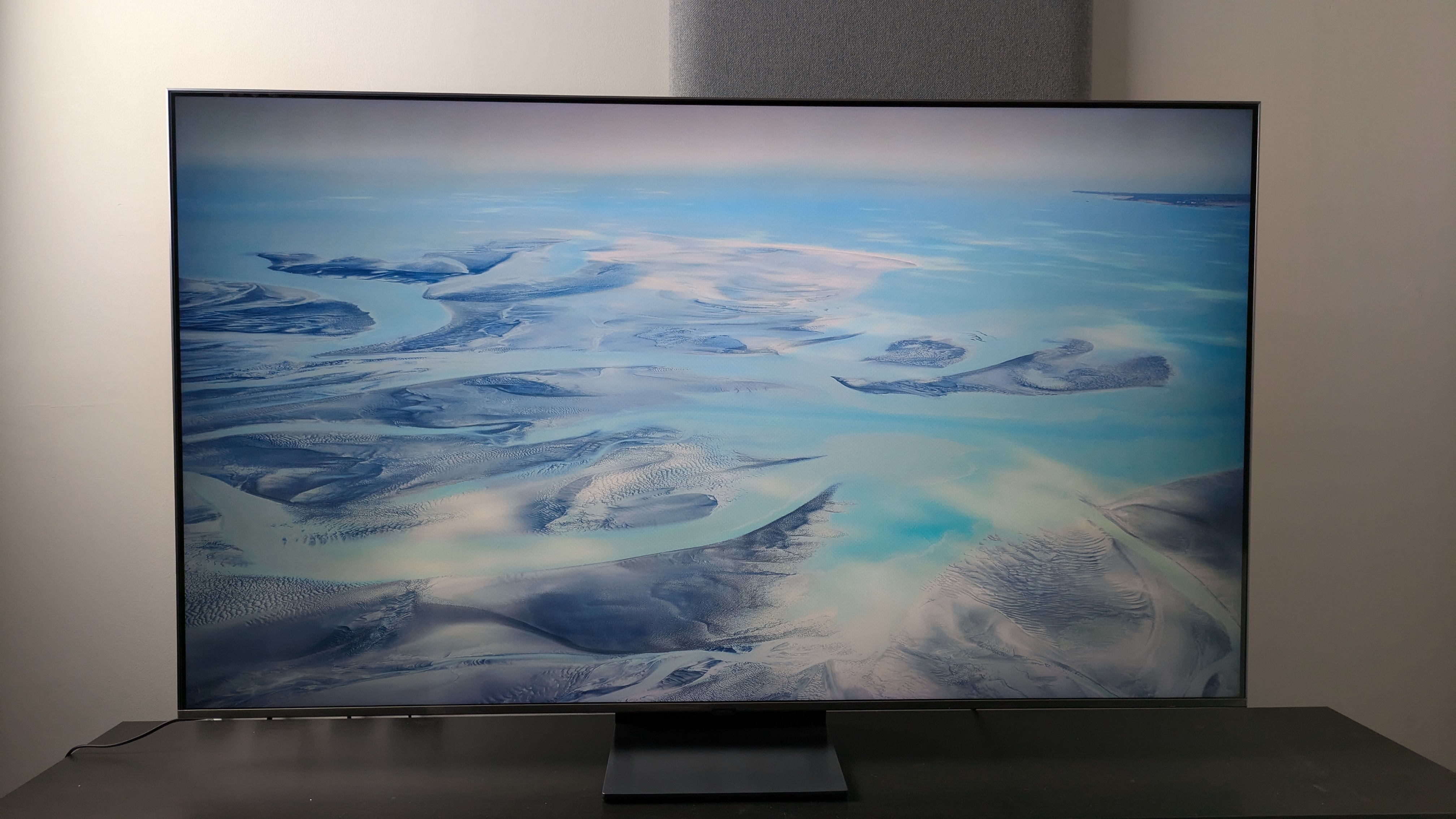
- Four-channel, 30W speaker system
- Direct sound
- Narrow soundstage and limited bass
The QN80F has a four-channel, 30W speaker system that supports Dolby Atmos. It has two preset sound modes, Standard and Amplify, as well as AI sound enhancement tools such as Active Voice Amplifier Pro (to enhance speech volume) and Adaptive Sound Pro (analyzes the content on screen to optimize the sound).
The QN80F’s built-in speakers delivered direct, clear sound throughout my viewing, with speech coming through with good clarity in most movies. Active Voice Amplifier Pro and Adaptive Sound Pro, found in the TV’s AI Mode in Advanced Settings, worked very well for sports by amplifying the commentary. Sound was also accurately connected to the action on screen, as demonstrated by the swerving traffic in The Batman’s Batmobile chase scene.
Unfortunately, the QN80F falls short elsewhere. In the same Batmobile scene, the soundstage was very narrow, and there was no sense of Dolby Atmos height or surround effects. Bass was also lacking, making the rumble of the Batmobile’s engine feel limited and flat. The balance between the vocals and score in Wicked was effective, but it didn’t have the same weight or dynamic quality I’d experienced with other TVs I've recently tested, such as the TCL C7K.
Bottom line: QN80F’s sound is fine for day-to-day viewing, but I’d recommend using it with a soundbar.
- Sound quality score: 3.5/5
Samsung QN80F review: Design
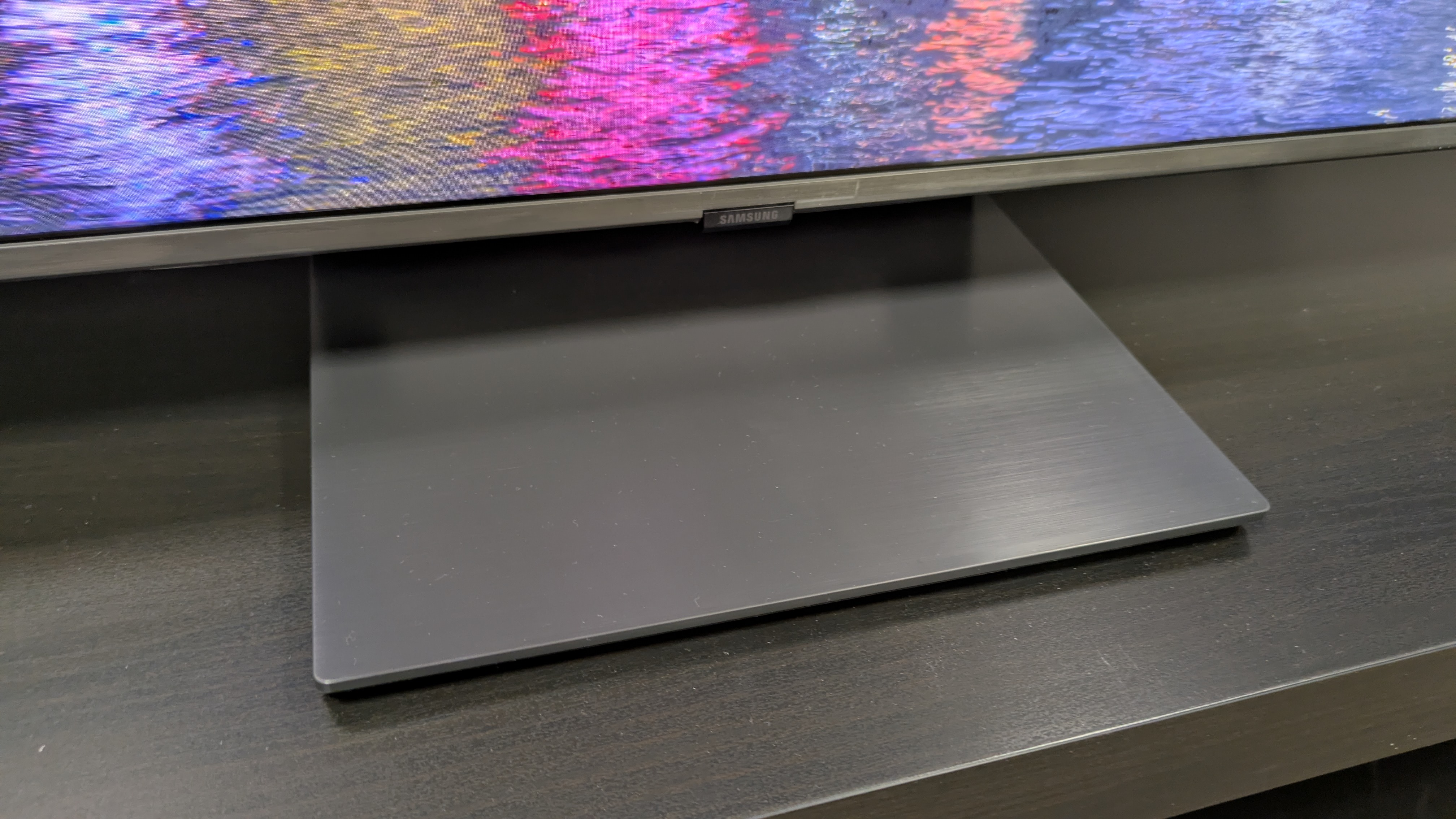
- Central pedestal stand
- Sturdy build quality
- Bulkier and plainer design than other Samsung TVs
The QN80F’s design plays it safe. It has a slightly bulkier depth than more premium mini-LED TVs and a plain-looking rear panel, though its glossy, silver metal frame does give it a more premium look than other mid-range TVs from Hisense and TCL.
The TV features a central pedestal stand, and due to its placement, it will make it difficult to place a soundbar underneath easily. The stand itself is made of a similar plastic to that used on the TCL C7K, but it still suits the QN80F’s design.
The QN80F uses Samsung’s SolarCell remote, a slim, compact remote control with minimal buttons. It can be charged using USB-C or the solar panel on the rear, eliminating the need for any batteries. In the UK, a second remote with numbered buttons is also included in the box.
- Design score: 4/5
Samsung QN80F review: Smart TV and menus
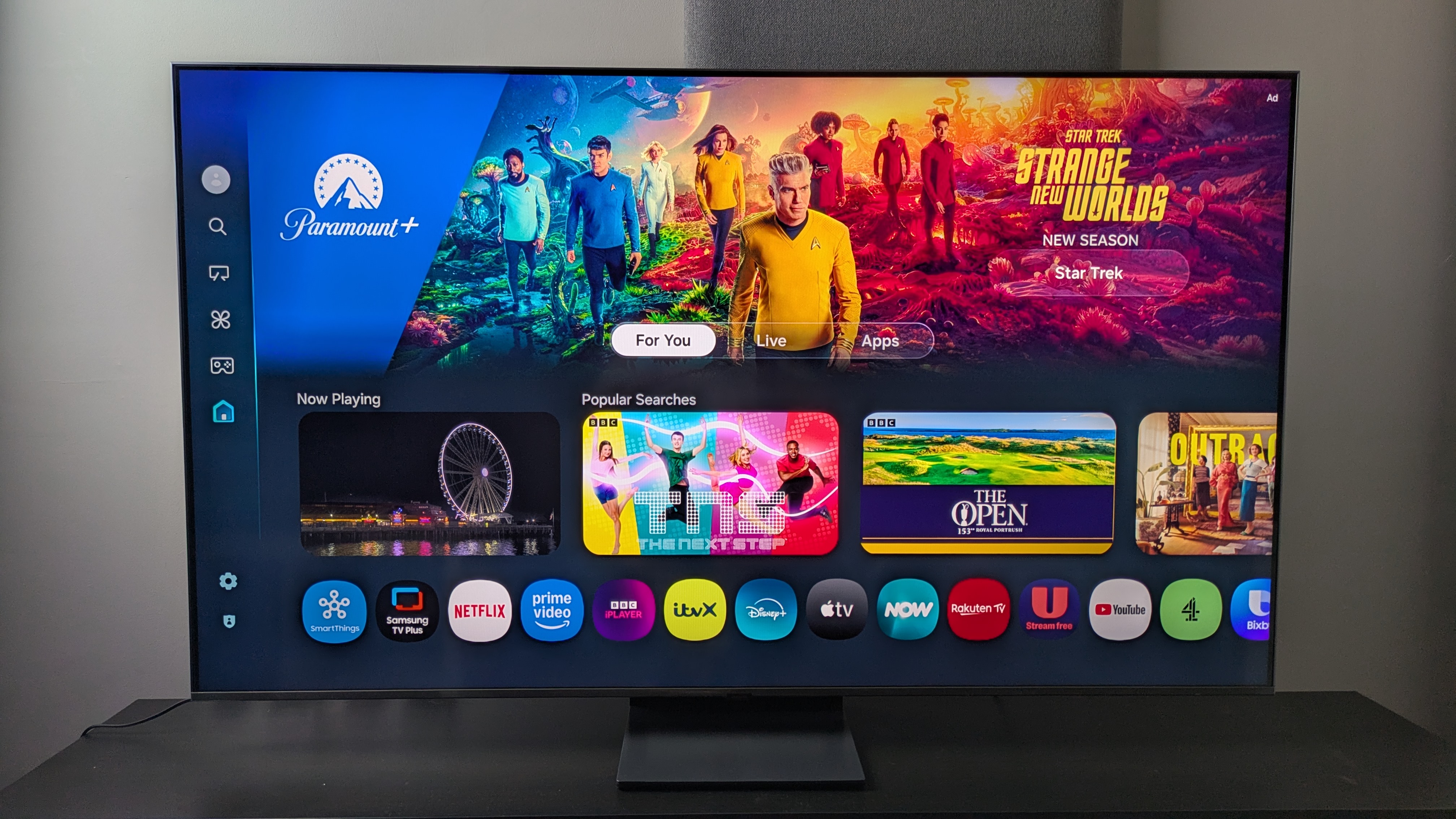
- Samsung Tizen 9.0 interface
- Home, Game, Daily+ and Art hubs
- Some settings difficult to find
The QN80F uses Samsung’s Tizen smart TV platform, now in version 9.0. The Home screen’s default layout is the For You page, which presents recommendations based on your viewing history, along with a row of customizable apps. There is a large sponsored ad at the top of the screen, but this is not as invasive as the one found on Google TV.
Tizen 9.0 is the most advanced version of Samsung’s smart TV platform to date. A useful Quick Menu provides easy access to major settings categories, and it even remembers your most visited settings for quick navigation. There are four major hubs: Home, Game (a portal for all things gaming), Daily+ (for health and office-based apps) and the Art Store (where artworks can be purchased to display as a screensaver).
There are plenty of picture settings in the menus for those who like to tweak, but this is also one area where Tizen 9.0 falls short. Some settings are buried in several submenus and can be very difficult to find. Still, performance is snappy enough that navigation is easy, though I did find the QN80F to be a bit slower than its more premium counterparts.
- Smart TV & menus score: 4.5/5
Samsung QN80F review: Gaming
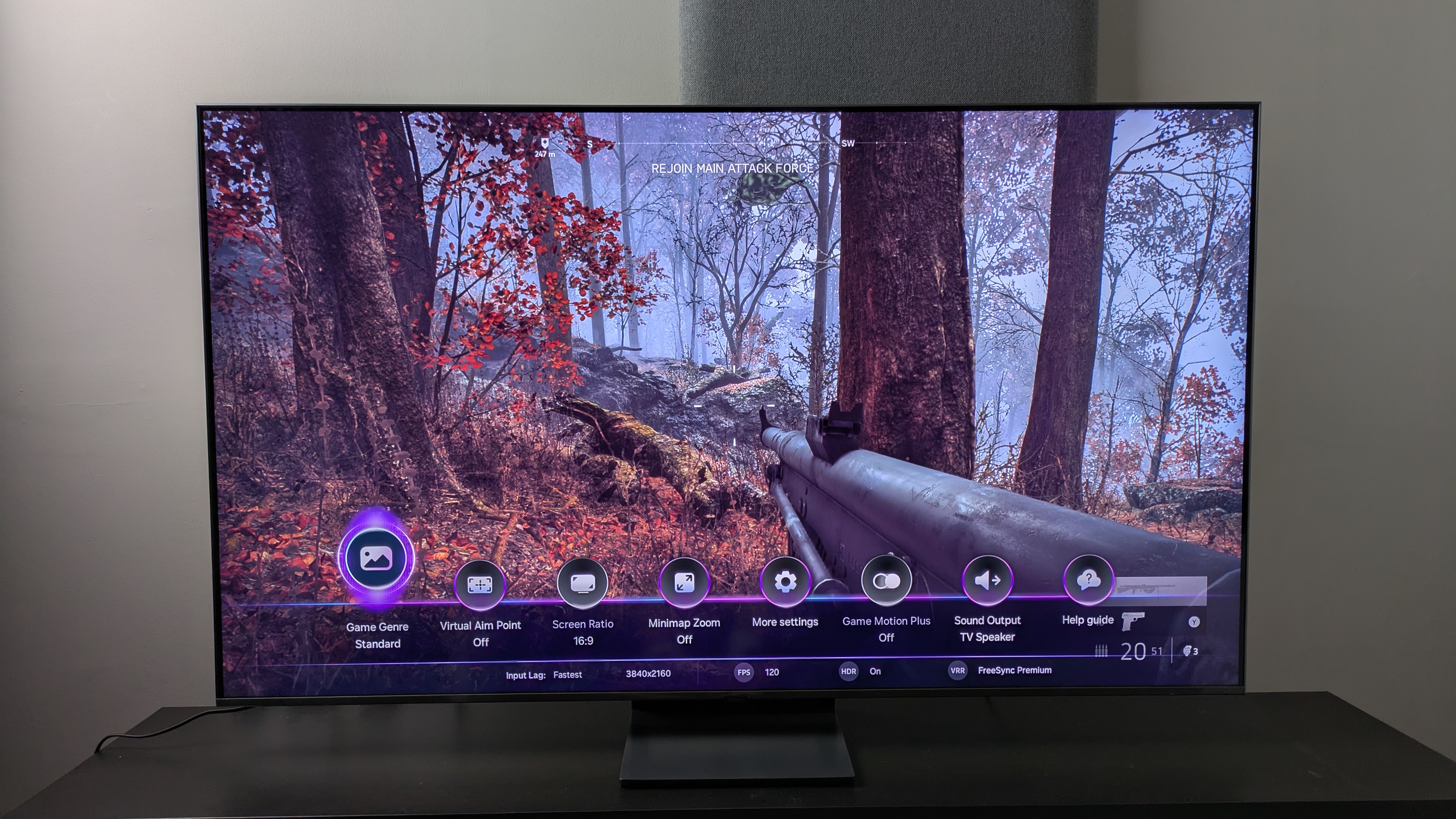
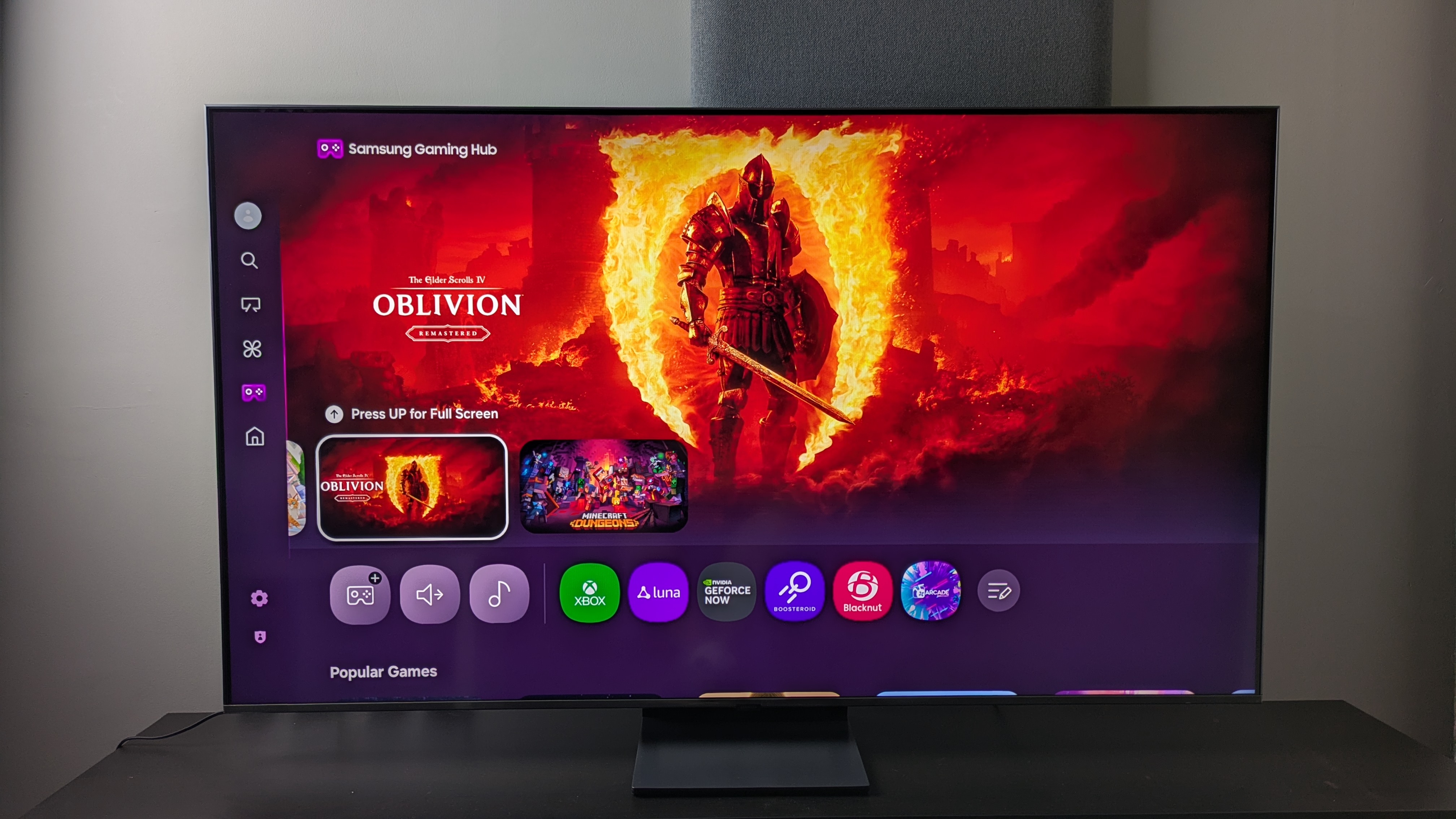
- Four HDMI 2.1 ports
- 4K 144Hz, AMD Freesync Premium Pro support
- 9.9ms input lag time
The QN80F has a stacked feature list for gaming. It supports 4K 144Hz, AMD FreeSync Premium Pro, ALLM and HDR10+ gaming, all featured on four HDMI 2.1 ports. Samsung’s Gaming Hub continues as an excellent portal for everything gaming-related, including access to cloud-based apps from Xbox, Luna and more.
Performance is responsive and snappy, even during fast-paced gameplay. In Battlefield V, the most chaotic of battles felt smooth, and targeting enemies was easy. This is helped by the QN80F’s ultra-low 9.9ms input lag time, which is up there with the best 120Hz TVs.
The QN80F’s Game picture mode delivers superb color and contrast with a nice hit of brightness. Textures are sharp, and motion is smooth and well-handled.
- Gaming score: 5/5
Samsung QN80F review: Value
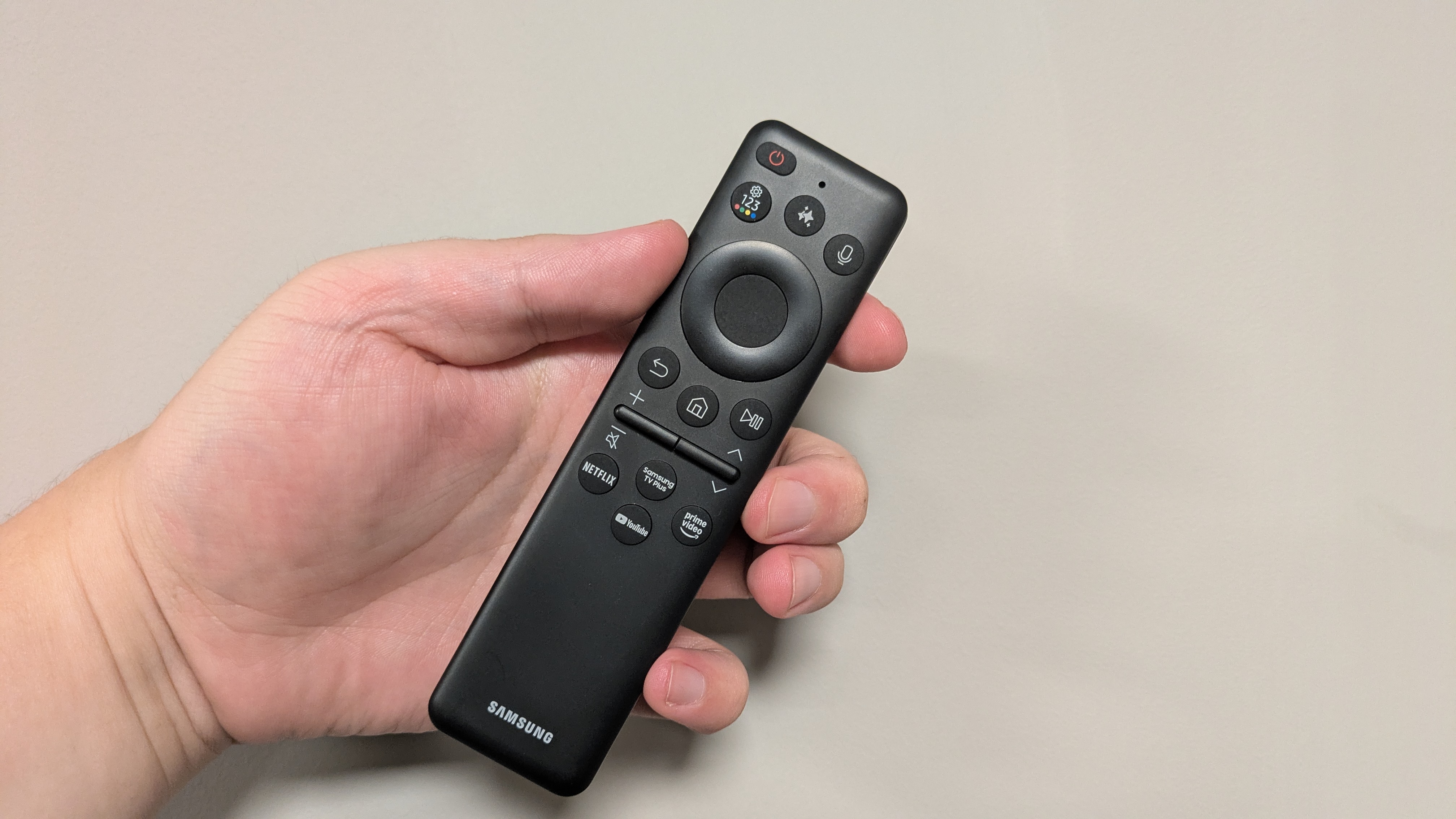
- Good feature set for the price
- Cheaper rivals available
- Price drops help value
Value is a difficult area to score for Samsung’s Neo QLED TVs. That was something we discovered in our Samsung QN90F review, and the same holds true for the Samsung QN80F.
The 55-inch model I tested is available for $1,299 / £1,199 at the time of writing. In the US, you can get the Hisense U8Q (the company’s flagship mini-LED TV) for $848, and the TCL QM7K mini-LED TV for $749, a $4-500 price difference from the QN80F. Yes, the QN80F has more features, but both those TVs are significantly brighter.
In the UK, the QN80F is a more tempting option. Priced at £1,199, it's cheaper than the Hisense U7Q Pro (the U75Q equivalent for the UK), which is priced at £1,499. But the rival TCL C7K 55-inch is priced at £849, so again cheaper rivals exist.
The QN80F’s stacked feature list and generally solid performance make it a more premium option than its rivals, but ultimately, the Hisense and TCL alternatives deliver nearly the same performance at a lower price.
- Value score: 3.5/5
Should I buy the Samsung QN80F?
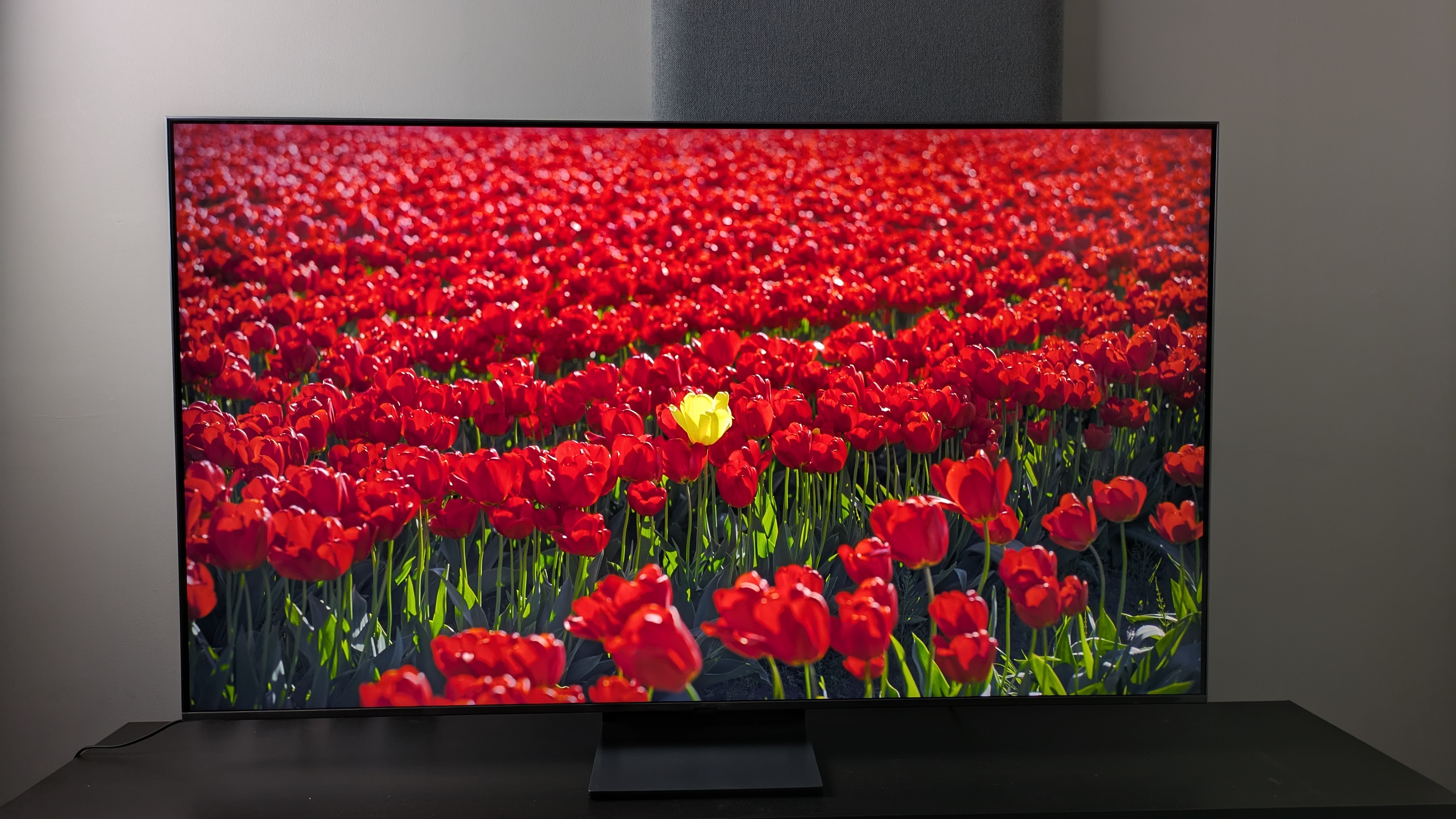
Attributes | Notes | Rating |
|---|---|---|
Features | A full suite of gaming features and AI-based enhancement settings | 5/5 |
Picture quality | Punchy colors and contrast and refined textures but motion is hit-and-miss and the reflective screen can be very distracting in bright rooms | 4/5 |
Sound quality | Clear speech and accurate placement but lacking bass and narrow soundstage | 3.5/5 |
Design | Plain design with slightly bulky depth but solid and sturdy with central stand | 4/5 |
Smart TV and menus | Snappier navigation and a 'hub' design make this the best version of Tizen yet, but some settings still buried in menus | 4.5/5 |
Gaming | An strong list of gaming features, with a responsive performance to match | 5/5 |
Value | More expensive than much of the competition and best sought out at a discounted price | 3.5/5 |
Buy it if...
You want a punchy, colorful picture
The QN80F's main strength lies in its colors, which are bold, yet natural-looking.
You want a great TV for gaming
The QN80F carries a near-full suite of gaming features, including 4K 144Hz, AMD FreeSync Premium Pro, ALLM, HDR10+ gaming, across four HDMI 2.1 ports, and it also delivers smooth, responsive performance.
You want a smooth user experience
Tizen 9.0 is the best version of Samsung's smart TV software to date, with a useful quick menu, mostly smooth navigation and an intuitive hub layout.
Don't buy it if…
You want Dolby Vision HDR:
As with all Samsung TVs, the QN80F doesn't support the Dolby Vision HDR format used for 4K Blu-ray and by streaming services. It does support HDR10+, however.
You want the best value mini-LED TV
The QN80F faces stiff competition from cheaper rivals that deliver equally strong performance and features for a lower price.
You have a very bright room
The QN80F's reflective screen resulted in mirror-like reflections during my testing in brighter conditions.
Samsung QN80F: Also consider...
| Header Cell - Column 0 | Samsung QN80F | Samsung QN90F | Hisense U8QG | TCL QM7K/TCL C7K |
|---|---|---|---|---|
Price (55-inch) | $1,299.99 / £1,399 (roughly AU$1,991) | $2,499.99 / £2,499 (roughly AU$3,786) | $999 / £1,799 (roughly AU$1,513) | $749 / £849 / AU$1,395 |
Screen type | QLED w/ mini-LED | QLED w/ mini-LED | QLED w/ mini-LED | QLED w/ mini-LED |
Refresh rate | 144Hz | 165Hz | 165Hz | 144Hz |
HDR support | HDR10+, HDR10, HLG | HDR10+/HDR10/HLG | DolbyVision/HDR10+/HDR10/HLG | DolbyVision/HDR10+/HDR10/HLG |
Smart TV | Tizen | Tizen | Google TV / VIDAA | Google TV |
HDMI ports | 4 x HDMI 2.1 | 4 x HDMI 2.1 | 3x HDMI 2.1 | 4 (2x HDMI 2.1) |
Hisense U8QG
The U8QQ is Hisense’s top mini-LED for 2025, and its picture quality is brilliant for the price. Although it struggles in similar areas to the QN80F (such as sound quality) it's arguably overall better value for money (in the US at least).
Here’s our Hisense U8QG review
Samsung QN90F
The step-up sibling to the QN80F, the Samsung QN90F offers superior picture and sound quality, plus its Glare-Free screen makes it better for bright room viewing. It is a significant price increase over the QN80F, but the QN90F is a big quality increase as well.
Here’s our Samsung QN90F review
TCL QM7K/C7K
TCL’s mid-range mini-LED model (QM7K in the US, C7K in the UK) delivers higher brightness, better overall sound and impressive gaming performance again for cheaper than the QN80F. But, the QN80F does offer more as an overall package.
Here’s our TCL QM7K review and our TCL C7K review
How I tested the Samsung QN80F
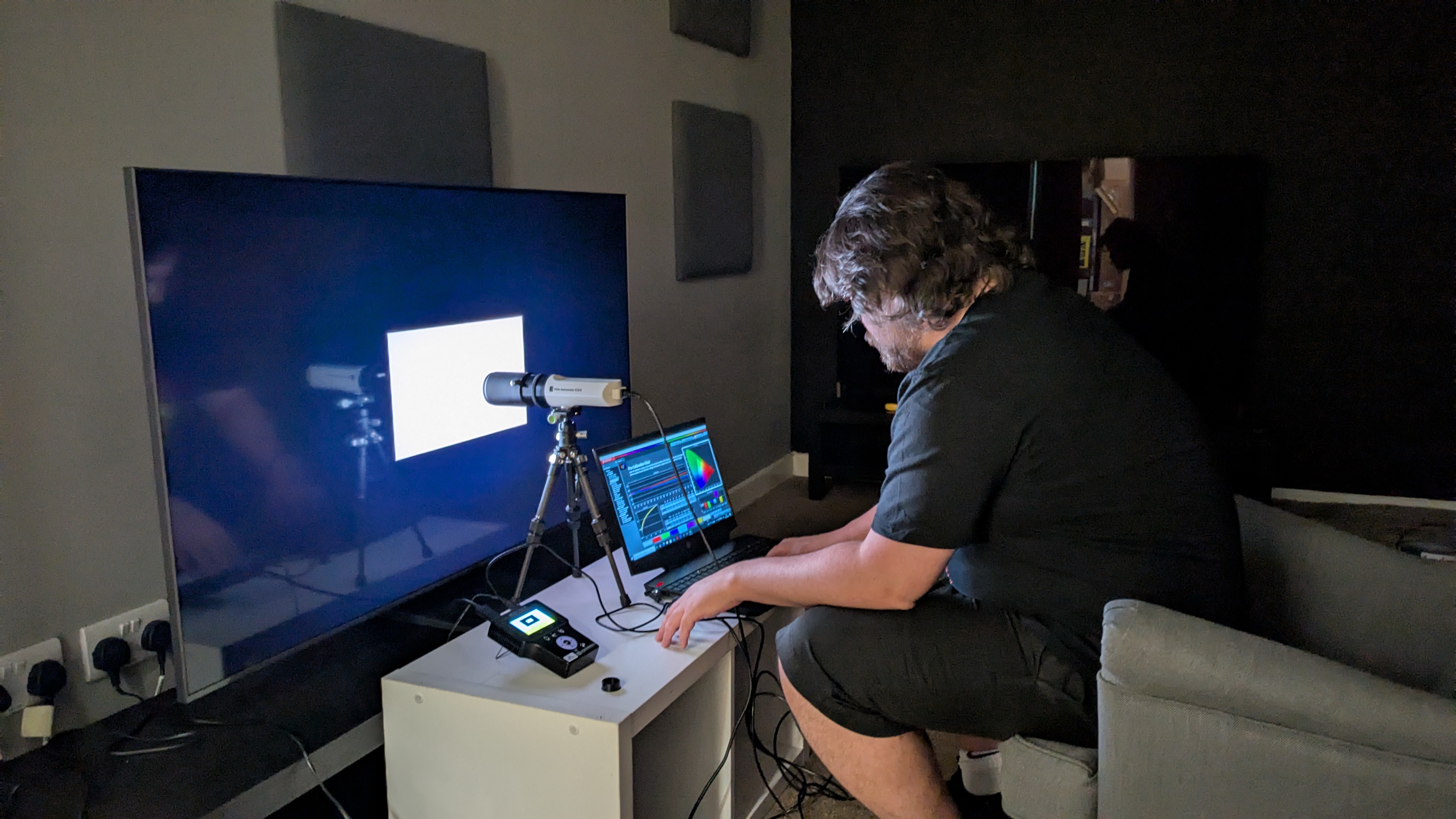
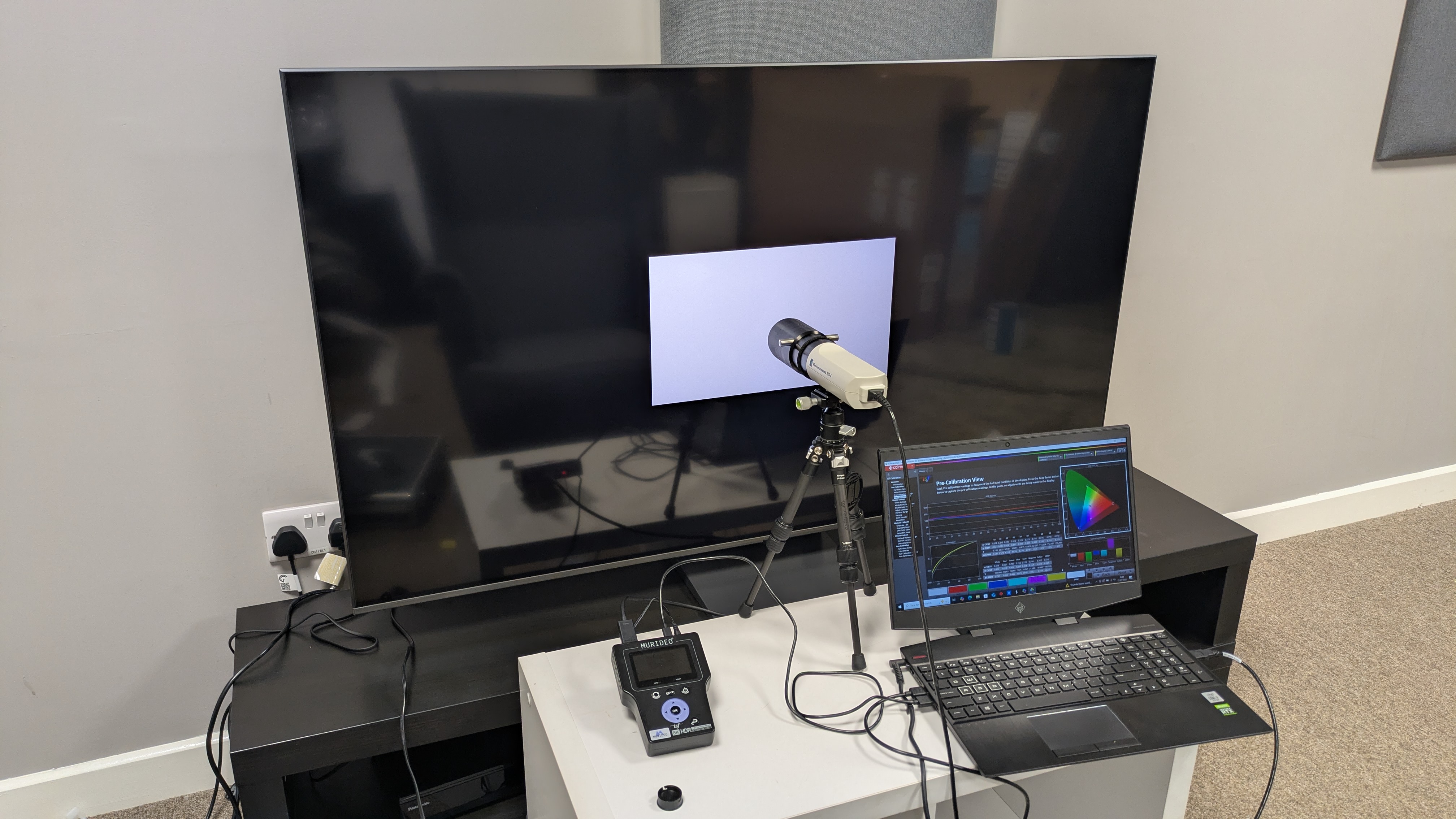
- Subjective tests made using HDR and SDR sources
- Measurements taken using Calman calibration software
- Tested in varying lighting conditions in our testing lab
Before conducting my subjective and objective tests, I did some casual viewing of the QN80F to determine its best picture mode, deciding on Movie mode due to its added brightness. Filmmaker Mode is a good alternative as it provides a more accurate picture but it lacks the visual punch of Movie mode.
For my subjective tests, I used reference scenes from a variety of HDR (4K Blu-ray and 4K streaming) and SDR (broadcast TV and lower-resolution formats such as DVD) sources to test the QN80F's picture quality, focusing on color, contrast, detail, motion handling and upscaling. I used some of these same scenes to analyze the QN80F's built-in speakers as well.
I took several measurements of the QN80F using a colorimeter, test pattern generator and Portrait Displays Calman Color Calibration software. Brightness was measured using 1-100% white window patterns in both SDR and HDR, with results presented for peak (10%) and fullscreen (100%) brightness.
I also measured the QN80F's grayscale and color accuracy, recording its Delta-E results (the margin of error between the test pattern and what's displayed on screen).
I also measured HDR color gamut coverage for the BT.2020 and DCI-P3 color spaces.
You can check out a more in-depth guide to how we test TVs at TechRadar in the link.
- First reviewed: July 2025
- Read TechRadar's reviews guarantee

James is the TV Hardware Staff Writer at TechRadar. Before joining the team, he worked at a major UK based AV retailer selling TV and audio equipment, where he was either telling customers the difference between OLED and QLED or being wowed by watching a PS5 run on the LG 65G2. When not writing about the latest TV tech, James can be found gaming, reading, watching rugby or coming up with another idea for a novel.
You must confirm your public display name before commenting
Please logout and then login again, you will then be prompted to enter your display name.
